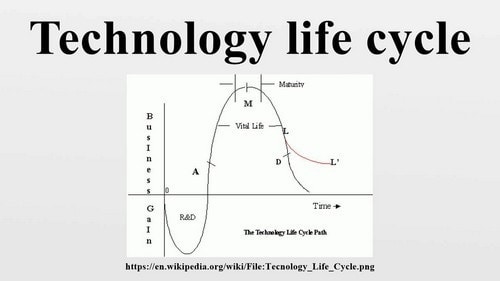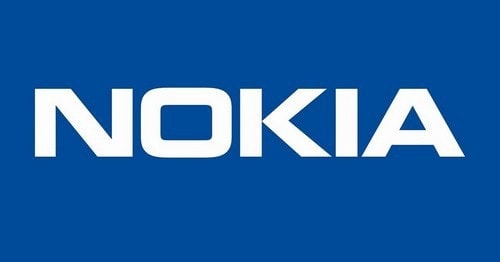The Technology Life Cycle can be defined as how the technology and its processes affect the business processes and impact the entire life cycle of the product offerings of the company. The stages that get impacted are the research and development phase, growth, maturity, and decline.
Table of Contents
Breaking Down the Technology Life Cycle
The Technology Life Cycle is quite different from the product life cycle as the life cycle of product deals with the performance of the product at the marketplace, whereas the life cycle of the technology focuses on the various stages of the technology in the development of the product and utilization of technology in the business processes.
It also harps on the aspect of the commercial gains of the technology used in the business process or a product. The lifespan of the technologies depends on the nature of the products and the business processes. Like the technologies such as steel, cement manufacturing or paper have the larger lifespan whereas the technologies of electronic appliances or pharmaceutical have the relatively short lifespan.
The Technology Life Cycle is mainly concerned with the time and cost of developing the innovative style of technology that gives a new edge to the business with the factor of competitive advantage. It harps on the aspects of the time required for recovering the costs incurred and if the methodologies of making the technology are generating the profits required and proportionate to the costs and risks involved in making it.
Did you know that innovation is the key to staying ahead in technology?
Steve Jobs, co-founder of Apple Inc., famously said, “Innovation distinguishes between a leader and a follower.” By continually investing in research and development, companies can extend the maturity phase of their Technology Life Cycle, ensuring they remain competitive and relevant in a rapidly evolving market.
The development of a competitive product can have a major impact on the entire lifecycle of the technology making it larger or shorter. Also, the loss of intellectual property rights through leakages, loss of secret elements or litigation can make the Technology Life Cycle shorter reducing its lifespan.
The management of the Technology Life Cycle is one of the most crucial and imperative business processes and an important aspect of the technology development. The adoption of technology is one of the most common facets that drive the evolution of industries along with the life cycle of the various industries.
The shape of the Technology Life Cycle is often referred to as the S curved shape. Many of the famous and renowned companies develop the technology for their own benefit and growth of the corporation rather than licensing it.
But if there is a threat of plagiarism in the Technology Life Cycle, then the companies license the same.
The 4 phases of the Technology Life Cycle :
1) Research and Development Phase
The research and development are also called as the bleeding edge as the income from the inputs being put in making the technology are negative in nature and the chances of failure of technology are quite high in nature. As the revenues are quite, the money for developing the technology is poured from your own pocket. At this stage, it is very important to take the feedback on the technology developed from the industry experts and tweak it to match as per the industry standards and to give it an edge of innovation and novelty.
2) Ascent Phase
The ascent phase of the Technology Life Cycle is also called as the leading edge as the company starts to recover the costs and expenses that have been incurred and plus the technology developed begins to gather strength and goes beyond the initial point of development to get accepted in the market. The company creates all the hype and promotion of the innovation and newness of the technology grabbing the attention from all the quarters.
3) Maturity Phase
The maturity stage arrives when the gains from the technology are high and stable but there is also a point of saturation. The technology developed is well accepted by the public but as the competitors are well aware and have caught with the realms of the technology developed, the market has reached the point of saturation. The revenues start to get slow down as the technology developed starts to become yet another commodity in the market. In order to stay relevant in the market, it is very important to make the incremental and innovative changes in the technology considering the changing dynamics of the markets and the evolving tastes of the customers. Keeping an eye on the competition is also very important at this stage.
4) Decline Phase
The decline phase is inevitable in nature most of the times and here is when the companies witness the decrease in sales of its products and there is a need or an emergence of the new and replacement of the technology. Many a time, the companies reach the point where there are no returns at all and further developments are not profitable at all. The best possible step that the company can initiate is to move out of the current technology and plant its resources on the new project that is sure to yield more profits.
The 4 stages of Technology Life Cycle :
1) Innovation Stage
The first and foremost stage of the Technology Life Cycle represents the innovation or the birth of the new product, software, material or the processes that are a result of the thorough research and development activities. In the R & D department of the company, various new ideas are planned, developed, tested, designed, and executed depending on the company resources and the current needs and demands of the market. This stage is quite time to consume in nature as the ideas need to be tested and verified considering the various internal and external forces affecting the operations of the business.
2) Syndication Stage
The syndication stage of the Technology Life Cycle focuses on the commercialization and demonstration of the new technology developed. The products, processes or material with the optimal potential for success are utilized on the immediate basis. In the research and development departments, many innovations are put on hold and only a percentage of the same are utilized for the commercial purposes. The outcome of the same largely depends on the economic factors along with the technical and non-technical factors.
3) Diffusion Stage
This stage focuses on the penetration of the new technology developed in the market and the technology is widely accepted by its potential users owing to its innovation and novel ideation. All this results in the higher profits, enhanced brand value, and elevated revenue generation for the company making it a market leader. But it is important to take note that the demand and supply side of factors jointly influence the rate of diffusion of the technology.
4) Substitution Stage
The substitution is the last and final stage of the Technology Life Cycle and represents the decline in the use of the technology due to its replacement with another technology that is far more better, novel, and innovative in nature catering to the current needs and demands of the target market. The time frame of the substitution stage depends on the dynamics of the market and the various technical and non-technical factors influence the rate of the substitution of the technology.
Here is a video by Marketing91 on Technology Life Cycle.
Example of the Technology Life Cycle
1) Nokia
In the early 2000’s the mobile brand Nokia was one of the best of the crops and was much loved and adored by its loyal customers. The Symbian technology used in its mobile phones was an instant hit with the customers and the brand was the market leader for a very long time until the onset of IOS and Android technologies by Apple and Google that were high on the levels of futuristic ideation and innovation leading to the decline stage of Nokia and its technologies.
Liked this post? Check out the complete series on Strategy

